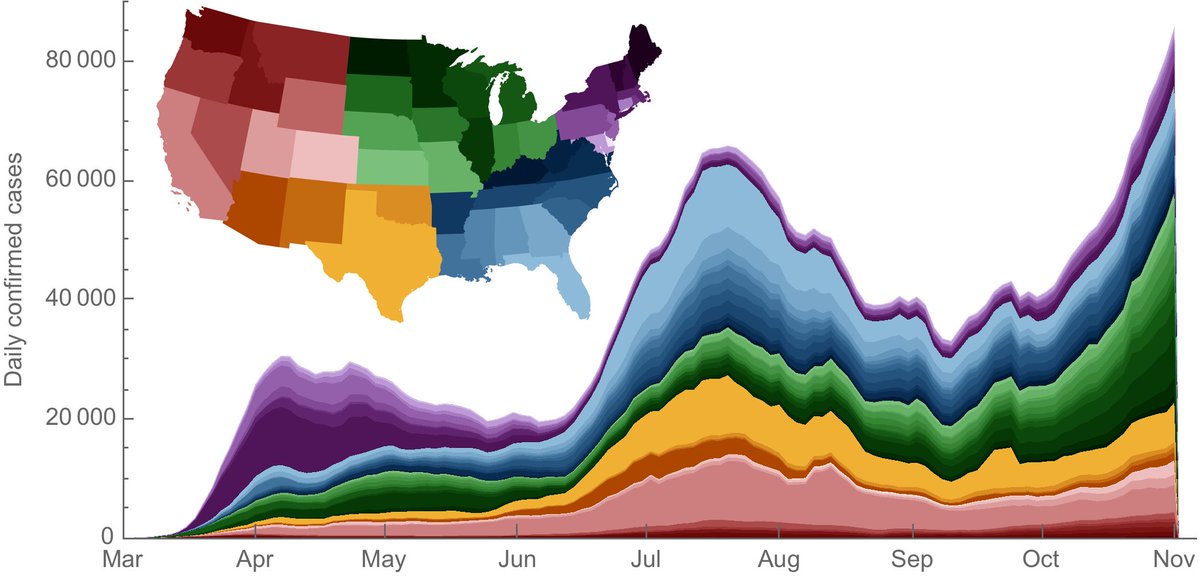
When I ran these simple lagged case fatality rate (CFR) calculations last week I was surprised and troubled at how big the predicted numbers of deaths in the coming weeks were. Since then #COVID19 daily case counts have continued to rise. 1/10
https://twitter.com/trvrb/status/1326404864843390976
@alexismadrigal and @whet describe in much better detail the simple logic behind this calculation here: theatlantic.com/science/archiv… and they do a thorough job investigating assumptions of the method. 2/10
Ryan Tibshirani with the Carnegie Mellon Delphi Research Group very helpfully did an independent replication of the method here: htmlpreview.github.io/?https://githu…. 3/10
If we look at Rt in the last couple of weeks there's very little evidence of reductions in transmission rate at the US level. Data from rt.live. 4/10 

You can see this clearly by looking at daily cases from @COVID19Tracking on a log scale for each state. The solid lines show 7-day average of state-level case counts and the dashed lines show simple linear-on-a-log-scale fits. Straight lines indicate exponential growth. 5/10 

Though I would note that North Dakota seems to perhaps be slowing down in transmission rate after perhaps ~30% of state has been infected. Figure from @youyanggu's covid19-projections.com. 6/10 

The logic of the lagged CFR calculation is that a fraction of individuals diagnosed with COVID-19 will succumb to their disease but that this takes time to occur and to be reported. We still expect 1.5% to 2.0% of cases to succumb and be reported 22 days later. 7/10 

If this is used for forward projection to convert cases reported today into deaths reported 22 days from now we get the following. Here, 7-day average of daily reported deaths is shown as solid red line and 22-day lookahead projection from cases is shown as dashed gray line. 8/10 

You can see that this simple projection has matched well since August. It predicts >2000 deaths per day starting in December. I really hope I'm wrong here and we see CFR drop in the coming weeks, but I don't see any obvious reasons to expect a sudden change in CFR. 9/10
Even if this short-term outcome is "baked into" already acquired infections, we can still do our best to reduce onward transmission. @zeynep expresses this extremely cogently (as always) here: theatlantic.com/health/archive…. 10/10
• • •
Missing some Tweet in this thread? You can try to
force a refresh







